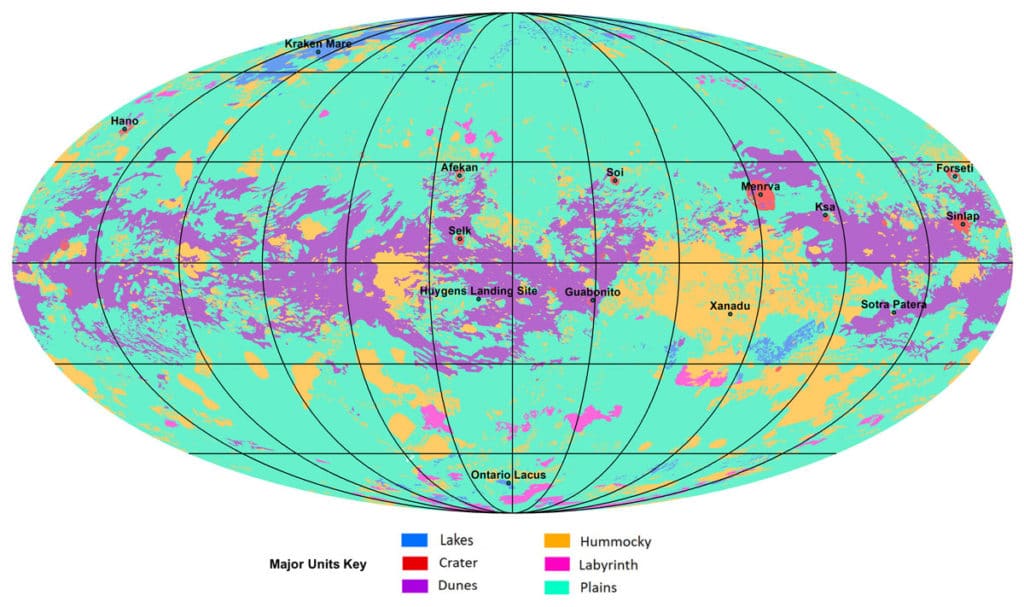Titan is the only planetary body in our solar system other than Earth known to have stable liquid on its surface. It has an active methane-based hydrologic cycle that has shaped a complex geologic landscape, making its surface one of most geologically diverse in the Solar System.
Both Earth and Titan have nitrogen-dominated atmospheres — over 95 percent nitrogen in Titan’s case. However, unlike Earth, Titan has very little oxygen; the rest of the atmosphere is mostly methane and trace amounts of other gases, including ethane. And at the frigid temperatures found at Saturn’s great distance from the sun, the methane and ethane can exist on the surface in liquid form.
By using the data from NASA‘s Cassini mission, scientists identified and mapped the major geological units on Titan’s surface using radar and infrared data from the Cassini orbiter spacecraft. The map shows that the different geologic terrains have a clear distribution with latitude, globally, and that some terrains cover far more area than others.
Scientists mainly used the data from Cassini’s radar imager to penetrate Titan’s opaque atmosphere of nitrogen and methane. Moreover, they used data from Cassini’s visible and infrared instruments, which were able to capture some of Titan’s larger geologic features through the methane haze. The entire data also enabled them to estimate the relative age of Titan’s geologic terrains.

Rosaly Lopes, a planetary geologist at NASA’s Jet Propulsion Laboratory in Pasadena, California, said, “This study is an example of using combined datasets and instruments. Although we did not have global coverage with synthetic aperture radar [SAR], we used data from other instruments and other modes from radar to correlate characteristics of the different terrain units so we could infer what the terrains are even in areas where we don’t have SAR coverage.”
Fellow planetary geologist David Williams of the School of Earth and Space Exploration at Arizona State University in Temp said, “The Cassini mission revealed that Titan is a geologically active world, where hydrocarbons like methane and ethane take the role that water has on Earth. These hydrocarbons rain down on the surface, flow in streams and rivers, accumulate in lakes and seas and evaporate into the atmosphere. It’s quite an astounding world!”
The outcomes additionally show that Titan’s surface is influenced by sedimentary or depositional processes with an evident latitudinal variation, with dunes at the equator, plains at mid-latitudes, and labyrinth territories and lakes at the poles.
Scientists recently published their findings in the journal Nature Astronomy.
